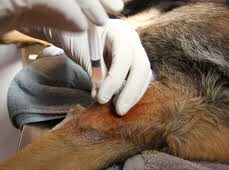Platelet-rich plasma (PRP) therapy has become a popular treatment option in veterinary medicine for a variety of conditions in both small and large animals. This therapy involves the use of a patient’s own blood, which is processed to concentrate the platelets, and then injected into the affected area. PRP therapy has been used to treat a wide range of conditions in veterinary medicine, including musculoskeletal injuries, osteoarthritis, and even skin wounds.
How PRP Therapy Works in Veterinary Medicine
Platelets are small blood cells that play a crucial role in the body’s natural healing process. When tissue is damaged, platelets are activated and release growth factors that promote healing and tissue regeneration. PRP therapy involves harvesting a patient’s blood, processing it to concentrate the platelets, and then injecting the platelet-rich plasma into the affected area. In veterinary medicine, PRP therapy is often used to treat musculoskeletal injuries and osteoarthritis, as well as skin wounds and other conditions.
PRP Therapy for Musculoskeletal Injuries in Animals
Musculoskeletal injuries are a common problem in animals, particularly in athletic and working animals. These injuries can cause pain, lameness, and reduced mobility, which can affect an animal’s quality of life. PRP therapy has been shown to be effective in treating musculoskeletal injuries in animals by promoting tissue regeneration and reducing inflammation in the affected area.
PRP Therapy for Osteoarthritis in Animals
Osteoarthritis is a degenerative joint disease that is common in both small and large animals. This condition can cause pain, stiffness, and reduced mobility, which can significantly impact an animal’s quality of life. PRP therapy has been used to treat osteoarthritis in animals by reducing inflammation in the affected joint and promoting the growth of new cartilage.
PRP Therapy for Skin Wounds in Animals
Skin wounds are a common problem in animals, particularly in outdoor and working animals. These wounds can be caused by a variety of factors, including trauma, infection, and underlying medical conditions. PRP therapy has been used to treat skin wounds in animals by promoting tissue regeneration and reducing inflammation in the affected area.
Benefits of PRP Therapy in Veterinary Medicine
PRP therapy offers several benefits for animals with musculoskeletal injuries, osteoarthritis, skin wounds, and other conditions. Some of these benefits include:
Non-surgical: PRP therapy is a non-surgical treatment that does not require general anesthesia or incisions.
Safe: Because PRP therapy uses a patient’s own blood, there is no risk of allergic reaction or rejection.
Effective: PRP therapy has been shown to be effective in treating a wide range of conditions in animals, with minimal side effects.
Minimal downtime: PRP therapy does not require a long recovery period, and animals can typically return to their normal activities immediately following treatment.
Long-lasting results: PRP therapy can provide long-lasting results, with some animals experiencing improvements for up to a year or more.
Conclusion
PRP therapy is a promising new treatment option in veterinary medicine. This therapy offers a safe and effective alternative to traditional treatments for musculoskeletal injuries, osteoarthritis, skin wounds, and other conditions, with minimal downtime and long-lasting results. If your animal suffers from a musculoskeletal injury, osteoarthritis, or skin wound, talk to your veterinarian to see if PRP therapy is right for them.








